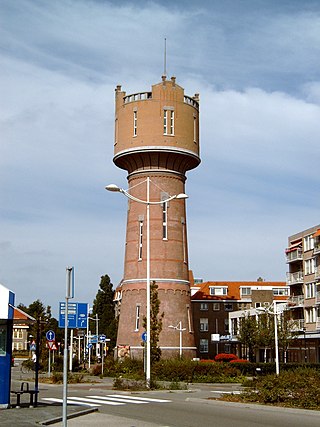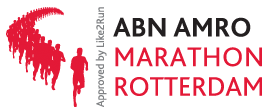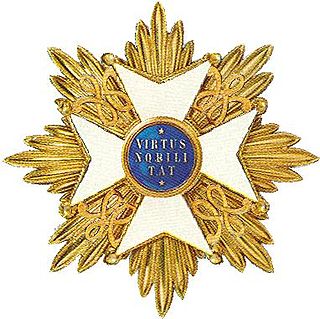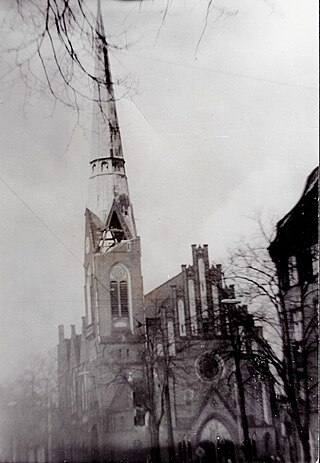
Den Helder is a municipality and a city in the Netherlands, in the province of North Holland. Den Helder occupies the northernmost point of the North Holland peninsula. It is home to the country's main naval base. From here the Royal TESO ferryboat service operates the transportation link between Den Helder and the nearby Dutch Wadden island of Texel to the north.

De Bilt is a municipality and town in the province of Utrecht, Netherlands. It had a population of 43,384 in 2021. De Bilt houses the headquarters of the Royal Netherlands Meteorological Institute (KNMI).

Felix Andries Vening Meinesz was a Dutch geophysicist and geodesist. He is known for his invention of a precise method for measuring gravity (gravimetry). Thanks to his invention, it became possible to measure gravity at sea, which led him to the discovery of gravity anomalies above the ocean floor. He later attributed these anomalies to continental drift. He was a Fellow of the Royal Society.

The Burns' Day Storm was an extremely violent windstorm that took place on 25–26 January 1990 over North-Western Europe. It is one of the strongest European windstorms on record and caused many fatalities in the UK and Europe. This storm has received different names, as there was no official list of such events in Europe at the time. Starting on Burns Day, the birthday of the Scottish poet Robert Burns, it caused widespread damage and hurricane-force winds over a wide area.
HIRLAM, the High Resolution Limited Area Model, is a Numerical Weather Prediction (NWP) forecast system developed by the international HIRLAM programme.
The Buys Ballot Medal is a prize given out by the Royal Netherlands Academy of Arts and Sciences. It was instituted in 1888 to honour the achievements of the Dutch meteorologist C.H.D. Buys Ballot. The prize is awarded approximately every ten years to an individual that has made significant contributions to meteorology.

In oceanography wind fetch, also known as fetch length or simply fetch, is the length of water over which a given wind has blown without obstruction. Fetch is used in geography and meteorology and its effects are usually associated with sea state and when it reaches shore it is the main factor that creates storm surge which leads to coastal erosion and flooding. It also plays a large part in longshore drift.

Cabauw is a village in the Dutch province of Utrecht. It is part of the municipality of Lopik, and lies about 12 km southwest of IJsselstein. Cabauw consists of a small village centre, and a ribbon of farms along the Lopikerwetering canal, between Zevender and Lopik.

The Royal Netherlands Meteorological Institute is the Dutch national weather forecasting service, which has its headquarters in De Bilt, in the province of Utrecht, central Netherlands.

The Rotterdam Marathon, currently branded NN Rotterdam Marathon, is an annual marathon that has been held in Rotterdam, Netherlands since 1981. It has been held in April every year since the third edition in 1984 and attracts many top athletes. It has also been ranked as one of the top 10 marathons in the world by Runner's World magazine. The event is the most popular marathon in the Netherlands, followed by the marathons of Amsterdam and Eindhoven.
Royal Institute or Royal Institution may refer to:

The Czech Hydrometeorological Institute is the central state office of the Czech Republic in the fields of air quality, meteorology, climatology and hydrology. It is an organization established by the Ministry of the Environment of the Czech Republic. The head office and centralized workplaces of the CHMI, including the data processing, telecommunication and technical services, are located at the Institute's own campus in Prague.

A royal is a small sail flown immediately above the topgallant on square rigged sailing ships. It was originally called the "topgallant royal" and was used in light and favorable winds.
Hendrik (Henk) Tennekes was the director of research at the Royal Dutch Meteorological Institute, and was a Professor of Aeronautical Engineering at Pennsylvania State University and Professor of Meteorology at the Vrije Universiteit Amsterdam. He is known for his work in the fields of turbulence and multi-modal forecasting. He authored the textbooks The Simple Science of Flight: From Insects to Jumbo Jets and A First Course in Turbulence with John L. Lumley. The book "A First Course in Turbulence", is a classic that logs more than 12,000 citations on Google Scholar.
Nicolaas Samuelszoon Kruik, also known as Klaas Kruik and Nicolaes Krukius, was a Dutch land surveyor, cartographer, astronomer and weatherman. He is commemorated by the Museum De Cruquius.

In the Dutch honours system, most orders are the responsibility of ministers of the Netherlands Government. The house orders, however, are awarded at the discretion of the Dutch monarch alone.

Cyclone Quimburga, also referred to as the Lower Saxony Storm, was a deadly European windstorm that struck northern and central Europe between 12 and 14 November, 1972. The storm has been described as one of the most devastating storm events during the 20th century.

Weather system naming in Europe follows several multinational schemes under the EUMETNET framework. On the north Atlantic coast, the United Kingdom's Met Office, in collaboration with its Irish counterpart Met Éireann and, since 2019, its Dutch counterpart the Royal Netherlands Meteorological Institute (KNMI), decided to introduce a storm naming system following the St Jude's day storm on 27–28 October 2013 which caused 17 deaths in Europe and the 2013–14 Atlantic winter storms in Europe to give a single, authoritative naming system to prevent confusion with the media and public using different names for the same storms. The first European windstorm to be named was Abigail on 10 November 2015. The definitive list is combined from suggestions from the three countries.












